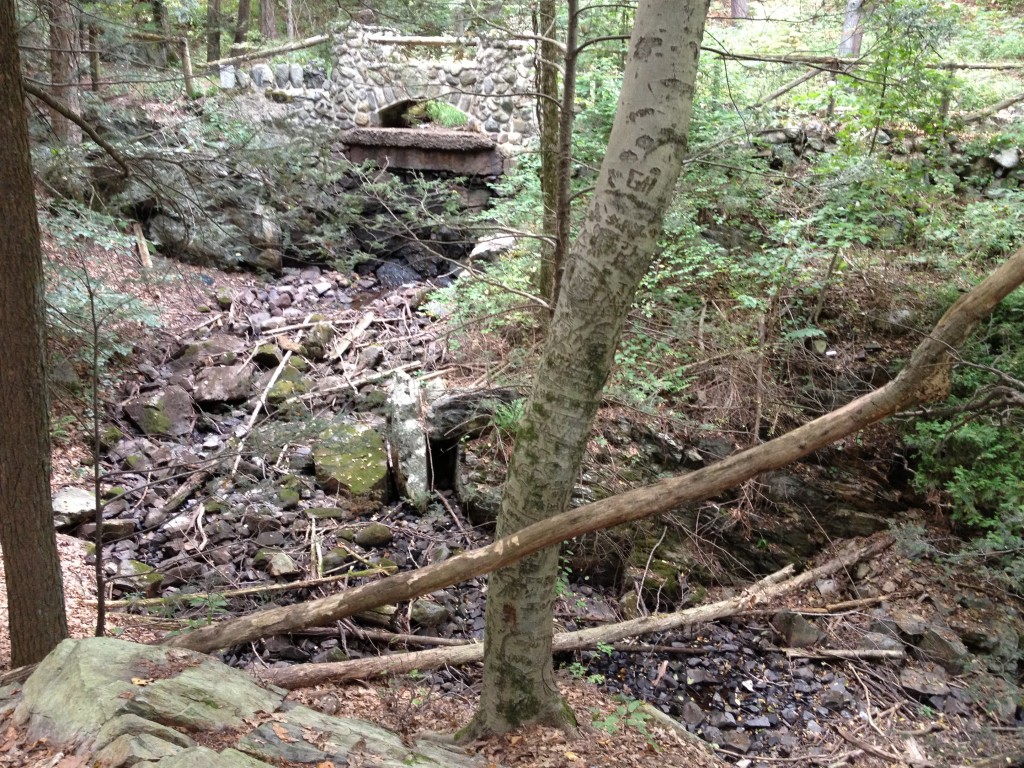Science in Museums: Museums in Nature
by columnist Kacie Rice

This weekend, after a busy and stressful few weeks of moving apartments and starting classes, I decided to go old-school and explore the original science museum: the nature reservation! I put on my boots and went to unwind in nature with a hike in our very own forest, the Middlesex Fells Reservation in Medford. I often find that short day hikes allow me to take on the role of John Falk’s “spiritual pilgrim,” though on this occasion, I found myself more of an “explorer” as I found new trails to discover. The Friends of the Fells, a nonprofit preservation group, maintains a website with various trail maps, where I found a map and PDF guide for the Spot Pond Brook Archaeological District Self-Guided Tour, a 0.8 mile loop that passes through former mill settlements in the Virginia Wood forest. Interested hikers can download the guide, which gives background information on eleven different sites marked with numbered posts along the trail.

The walk takes an hour or less, going through hemlock forests, over old stone bridges, and past crumbling property walls. Along the way, you can stop to read in your downloaded guide about the farmers and manufacturers who lived on this land from the 17th through the 19th centuries. Settlers were originally attracted to the forest near Spot Pond for its natural stream, which provided a power source for milling. Later, Charles Goodyear used this land for one of the first vulcanized rubber plants. An 18th century dam over the stream is still visible, as are stone foundations from mill buildings and houses.
My visit got me thinking about what a museum can be: we generally think of a museum as an indoor site where objects are collected, displayed, and interpreted, but isn’t a similar form of display and interpretation going on at a site like the Spot Pond Brook Archaeological District? I found myself engaged in an enjoyable recreational activity while also learning about historic artifacts in their original location. Additionally, I was seeing trees, squirrels, birds, fungi, and other forms of life around me as I walked, learning about scientific processes by observation. This kind of guided visit has the potential to combine history and science in a way that gives greater meaning to both topics.
I think that in the loosest sense of the term, a reservation or park can be a perfect science museum. What better place to learn about biology than in a forest teeming with life? During my summer in Washington, D.C., I was fortunate to be able to spend several weekends at Shenandoah National Park in Virginia, where I observed all stages of life cycles in the mountains: does with their timid fawns, black bears hunting fish, and fallen trees being reclaimed by decomposing fungi. We can see images or dioramas of these things in museums, but it’s another thing to see them up close as they’re happening.
As another informal site of learning, parks can exist happily in a Venn diagram with museums in several regards: they allow us to explore at our own pace and to fill whichever role we want to take, from explorer to spiritual pilgrim to hobbyist; they allow us to learn about science and history in an absolutely immersive, interactive way; and they give us a place where we can enjoy ourselves while learning recreationally. After learning new things about both the history and ecology of Medford and the potential of parks as informal learning centers, I’m excited to see what I can learn on my next adventure!